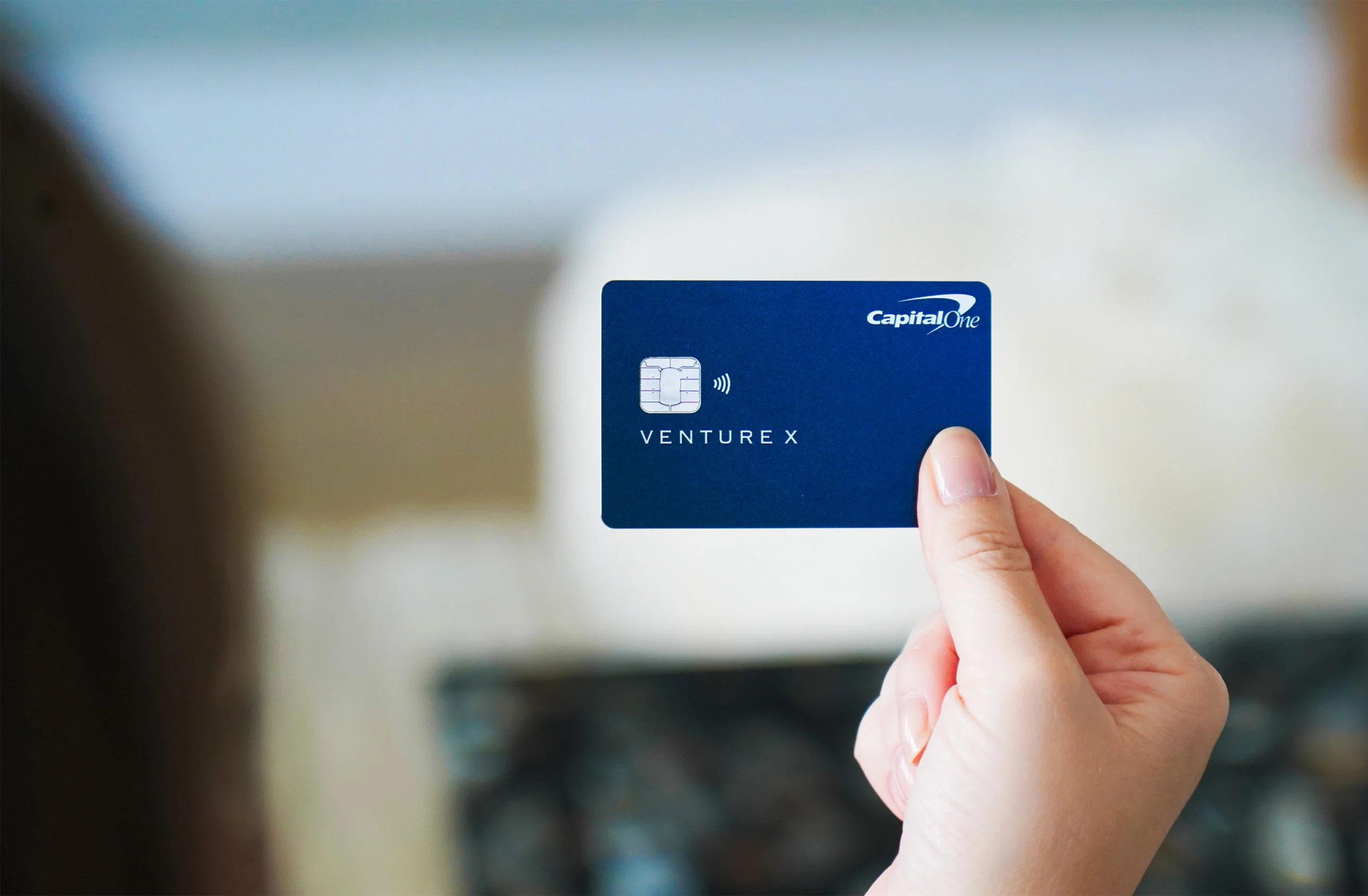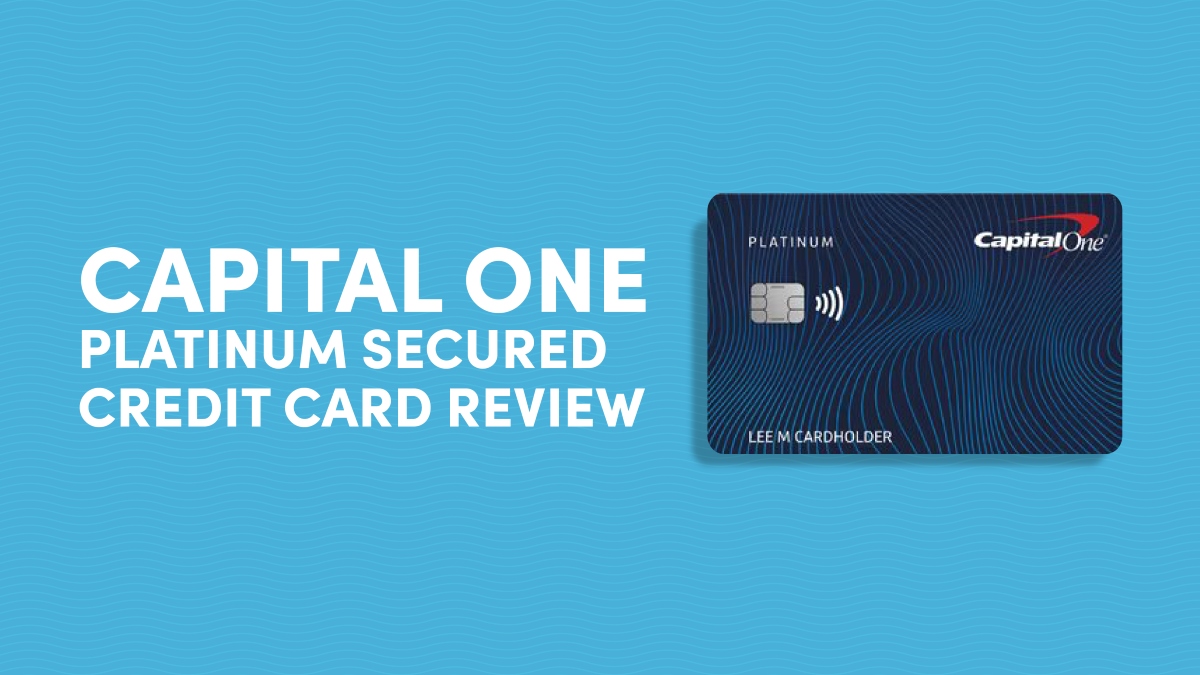Home>Finance>How To Go From Secured To Unsecured Credit Card Capital One


Finance
How To Go From Secured To Unsecured Credit Card Capital One
Modified: March 5, 2024
Learn how to transition from a secured to an unsecured credit card with Capital One and take control of your finances. Discover actionable tips and strategies today.
(Many of the links in this article redirect to a specific reviewed product. Your purchase of these products through affiliate links helps to generate commission for LiveWell, at no extra cost. Learn more)
Table of Contents
- Introduction
- Secured Credit Cards vs. Unsecured Credit Cards
- Benefits of Transitioning to an Unsecured Credit Card
- Steps to Transition from Secured to Unsecured Credit Card with Capital One
- Research and Evaluate Capital One’s Unsecured Credit Card Options
- Improve Your Credit Score
- Contact Capital One to Request a Transition
- Monitor Your Progress and Maintain Good Credit Habits
- Conclusion
Introduction
When it comes to managing your finances, credit cards can play a significant role in your financial journey. They offer convenience, flexibility, and the opportunity to build or rebuild your credit history. However, not everyone has a pristine credit record, and that’s where secured credit cards come into play.
A secured credit card is a type of credit card that requires a security deposit as collateral. This deposit acts as a safety net for the credit card issuer in case you default on your payments. Secured credit cards are generally easier to obtain for individuals with low credit scores or no credit history, making them a valuable tool for improving your creditworthiness.
While secured credit cards can be a useful stepping stone, the ultimate goal for many cardholders is to transition to an unsecured credit card. An unsecured credit card does not require a security deposit, and it offers greater flexibility and potential rewards. Making the switch from secured to unsecured credit cards can be a sign of financial progress and responsible credit management.
In this article, we will explore the benefits of transitioning to an unsecured credit card and provide you with a step-by-step guide on how to make the transition with Capital One, a reputable credit card issuer known for its variety of credit card options.
Secured Credit Cards vs. Unsecured Credit Cards
Before we dive into the process of transitioning from a secured to an unsecured credit card, let’s first understand the key differences between the two:
- Security Deposit: One of the main distinctions between secured and unsecured credit cards is the requirement of a security deposit. Secured credit cards require a deposit as collateral, usually equal to the credit limit. This deposit protects the issuer in case the cardholder fails to make payments. Unsecured credit cards, on the other hand, do not require a security deposit.
- Credit Limit: Secured credit cards typically have a credit limit that matches the amount of the security deposit. For example, if you provide a $500 security deposit, your credit limit will also be $500. Unsecured credit cards, on the other hand, have varying credit limits that are determined by the card issuer based on factors such as your creditworthiness and income.
- Interest Rates and Fees: Secured credit cards may have higher interest rates and fees compared to unsecured credit cards. This is because they cater to individuals with lower credit scores or limited credit history. Unsecured credit cards, especially those with better terms and rewards, often come with lower interest rates and fees.
- Credit Building: Both secured and unsecured credit cards can help you build or rebuild your credit history. However, secured credit cards are often seen as a starting point for individuals who need to establish or improve their credit. Regular and responsible use of either card can lead to positive changes in your credit score over time.
- Rewards and Benefits: While secured credit cards may offer some rewards and benefits, they are generally more limited compared to the rewards and benefits offered by unsecured credit cards. Unsecured credit cards often come with various perks, such as cash back, travel rewards, and premium benefits like airport lounge access and concierge services.
Understanding these differences can help you determine when it’s the right time to transition from a secured credit card to an unsecured credit card. Let’s explore the benefits of making this transition in the next section.
Benefits of Transitioning to an Unsecured Credit Card
Transitioning from a secured credit card to an unsecured credit card offers several advantages that can positively impact your financial journey. Here are some key benefits to consider:
- Security Deposit Refund: One of the most significant benefits of switching to an unsecured credit card is the potential for a security deposit refund. Once you’ve successfully transitioned, the credit card issuer will typically refund your security deposit, freeing up those funds for other purposes.
- Increased Credit Limit: Unsecured credit cards often provide higher credit limits compared to secured credit cards. This can give you more purchasing power and flexibility to manage your expenses effectively.
- Rewards and Benefits: Unsecured credit cards typically offer a wider range of rewards and benefits. These can include cash back, travel rewards, sign-up bonuses, and access to exclusive perks such as travel insurance, extended warranties, and concierge services.
- Improvement in Credit Score: By successfully transitioning to an unsecured credit card, you demonstrate financial progress and responsible credit management. This can have a positive impact on your credit score and further improve your creditworthiness over time.
- Opportunity for Better Financial Products: Establishing a favorable credit history with an unsecured credit card can open doors to better financial products in the future. This can include access to lower interest rates on loans, higher credit limits, and improved terms and conditions when applying for other credit cards.
- Flexibility and Convenience: Unsecured credit cards generally provide greater flexibility and convenience. With a higher credit limit and more rewards and benefits, you have more options for managing your finances and enjoying additional perks.
Transitioning from a secured credit card to an unsecured credit card can be a significant milestone in your financial journey. Not only does it offer tangible benefits, but it also signals financial progress and responsible credit behavior.
Now that you understand the benefits, let’s move on to the step-by-step process of transitioning from a secured to an unsecured credit card with Capital One.
Steps to Transition from Secured to Unsecured Credit Card with Capital One
If you hold a secured credit card with Capital One and want to transition to an unsecured credit card, follow these simple steps:
- Research and Evaluate Capital One’s Unsecured Credit Card Options: Start by researching and evaluating the unsecured credit card options offered by Capital One. Visit their website or contact their customer service to understand the features, benefits, and eligibility requirements of each card. Consider factors such as annual fees, interest rates, rewards programs, and any introductory offers.
- Improve Your Credit Score: Before transitioning to an unsecured credit card, it’s important to improve your credit score as much as possible. Make consistent and timely payments on all your debts, keep your credit utilization low, and avoid applying for new credit cards or loans. Focus on building a positive credit history to increase your chances of approval for an unsecured credit card.
- Contact Capital One to Request a Transition: Once you feel confident in your creditworthiness, contact Capital One’s customer service to request a transition from your secured credit card to an unsecured credit card. Be prepared to provide your account details, personal information, and a brief explanation of why you believe you are ready for an unsecured credit card.
- Provide Additional Documentation if Required: Capital One may request additional documentation to support your request, such as recent pay stubs, bank statements, or proof of income. Ensure you have these documents ready and submit them promptly to expedite the transition process.
- Monitor Your Progress and Maintain Good Credit Habits: While waiting for your request to be processed, continue to monitor your credit score and maintain good credit habits. Pay all your bills on time, avoid carrying high balances on your credit cards, and regularly review your credit reports for any errors or discrepancies.
- Await Capital One’s Decision: Once you have submitted your request and any additional documentation, await Capital One’s decision regarding your transition from a secured to an unsecured credit card. This may take some time, so be patient and continue managing your finances responsibly.
- Upgrade or Apply for an Unsecured Credit Card: If your request for a transition is approved, Capital One will guide you through the process of upgrading your secured credit card to an unsecured credit card. If the transition is not possible at this time, consider applying for an unsecured credit card with them or exploring other options to continue building your credit.
By following these steps, you’ll maximize your chances of successfully transitioning from a secured to an unsecured credit card with Capital One. Remember, responsible credit management and a positive credit history are crucial for the approval of an unsecured credit card.
Continue reading for tips on improving your credit score and maintaining good credit habits.
Research and Evaluate Capital One’s Unsecured Credit Card Options
When transitioning from a secured credit card to an unsecured credit card with Capital One, it’s important to research and evaluate the unsecured credit card options they offer. This will help you choose the right card that aligns with your financial goals and needs. Here’s how you can go about it:
- Visit Capital One’s Website: Start by visiting Capital One’s official website. They provide detailed information about their credit card offerings, including unsecured credit cards. Take your time to explore the various options available and familiarize yourself with the features, benefits, and rewards associated with each card.
- Compare Terms and Conditions: Pay close attention to the terms and conditions of each unsecured credit card option. Look for details such as the annual fee, interest rate, and any fees associated with balance transfers, cash advances, or foreign transactions. Consider how these terms fit into your budget and financial situation.
- Review the Rewards Program: Capital One offers different rewards programs for their unsecured credit cards. Take a closer look at the rewards program and determine if it aligns with your spending habits and preferences. Consider if you prefer cashback rewards, travel rewards, or any specific categories that offer bonus rewards.
- Consider Introductory Offers: Some unsecured credit cards from Capital One may come with introductory offers. These could include a 0% APR for a certain period, a sign-up bonus, or waived annual fees for the first year. Evaluate these offers and assess how they can benefit you in the short term.
- Check Eligibility Requirements: Every credit card has its own eligibility requirements, which may include factors such as credit score, income level, and employment status. Make sure to review the eligibility criteria for each unsecured credit card to see which ones are most suitable for your current financial situation.
- Read Customer Reviews and Ratings: Customer reviews and ratings can provide valuable insights into the overall experience of using the credit card. Look for reviews on reputable financial websites or browse through customer feedback on Capital One’s website. Consider both the positive and negative feedback to get a well-rounded understanding.
- Contact Customer Service: If you have any specific questions or concerns about the unsecured credit cards offered by Capital One, don’t hesitate to contact their customer service. Reach out to their representatives to seek clarification on any details or seek guidance on which card would be the best fit for you.
By thoroughly researching and evaluating Capital One’s unsecured credit card options, you can make an informed decision about which card to choose. This will ensure that you select a credit card that aligns with your financial goals, lifestyle, and preferences.
Once you have identified the right card, it’s time to focus on improving your credit score to increase your chances of approval for an unsecured credit card. Continue reading for tips on improving your credit score.
Improve Your Credit Score
Improving your credit score is a crucial step in transitioning from a secured to an unsecured credit card. A higher credit score not only increases your chances of being approved for an unsecured credit card but also opens the door to more favorable terms and conditions. Here are some tips to help you improve your credit score:
- Make Timely Payments: Consistently making your payments on time is one of the most important factors in building a positive credit history. Set up automatic payments or reminders to ensure you never miss a payment. Late payments can have a negative impact on your credit score.
- Keep Balances Low: Maintaining low credit card balances is essential for improving your credit score. Aim to keep your credit utilization ratio below 30% by paying off your balances in full each month or keeping them as low as possible. High utilization can indicate to lenders that you may be relying too heavily on credit.
- Limit New Credit Applications: Avoid applying for multiple new credit cards or loans in a short period. Each credit application results in a hard inquiry on your credit report, which can temporarily lower your credit score. Only apply for new credit when necessary and when you have a strong chance of approval.
- Monitor Your Credit Reports: Regularly review your credit reports to ensure they are accurate and free of errors. Dispute any inaccuracies you come across and follow up with the credit reporting agencies to have them corrected. Monitoring your reports helps you stay on top of your credit health and address any issues promptly.
- Diversify Your Credit Mix: Having a mix of different types of credit accounts, such as credit cards, loans, and a mortgage, can positively impact your credit score. Lenders like to see that you can handle different types of credit responsibly. However, only take on credit that you can manage comfortably.
- Lengthen Your Credit History: The length of your credit history plays a role in your credit score. The longer you have a positive credit history, the better it reflects on your creditworthiness. Keep older credit card accounts active and in good standing to demonstrate a strong credit history.
- Use Credit Responsibly: Practice responsible credit behavior by using your credit cards and loans responsibly. Avoid maxing out your credit cards, closing accounts, or defaulting on any debts. Consistently paying your bills on time and keeping your credit utilization low will help establish your creditworthiness.
Improving your credit score takes time and consistent effort. Be patient and continue working towards responsible credit management. As you see positive changes in your credit score, you’ll increase your chances of being approved for an unsecured credit card with Capital One.
In the next section, we will discuss how to contact Capital One and make a request to transition from a secured to an unsecured credit card.
Contact Capital One to Request a Transition
Once you have researched Capital One’s unsecured credit card options and taken steps to improve your credit score, it’s time to contact Capital One and make a request to transition from your secured credit card to an unsecured credit card. Here’s how you can do it:
- Gather Your Account Information: Before contacting Capital One, gather all the necessary information related to your secured credit card account. This includes your account number, the amount of your security deposit, and any other relevant details.
- Locate Contact Information: Visit Capital One’s website or refer to the information provided on your credit card statement to find the appropriate contact information. This may include a dedicated phone number or an online form specifically for credit card account inquiries or transitions.
- Prepare a Brief Explanation: When you contact Capital One, be prepared to provide a brief explanation of why you believe you are ready to transition to an unsecured credit card. Highlight any positive changes in your credit profile, such as improved credit score, responsible credit card usage, or any other relevant factors that demonstrate your creditworthiness.
- Be Honest and Transparent: It’s important to be honest and transparent when communicating with Capital One. If you have encountered any hurdles in your credit journey, address them honestly. Demonstrate your commitment to responsible credit management and your desire to continue building a positive credit history.
- Answer Additional Questions or Provide Documentation: The Capital One representative may ask you additional questions or request additional documentation to evaluate your request. Be prepared to provide any necessary information promptly to expedite the process.
- Follow the Instructions Provided: Capital One will provide you with instructions on how to proceed with the transition request. They may require you to fill out specific forms, make certain payments, or provide further documentation. Follow these instructions carefully and meet all deadlines to ensure a smooth transition.
- Stay in Communication: Throughout the transition process, stay in communication with Capital One. Respond promptly to any inquiries or requests for information. If you have any questions or concerns, don’t hesitate to reach out to their customer service team for clarification or assistance.
By initiating contact with Capital One and expressing your desire to transition from a secured to an unsecured credit card, you demonstrate your commitment to responsible credit management. Remember to remain patient, as the transition process may take some time. Continue reading for tips on monitoring your progress and maintaining good credit habits.
Monitor Your Progress and Maintain Good Credit Habits
Once you have requested a transition from a secured to an unsecured credit card with Capital One, it’s important to monitor your progress and maintain good credit habits. Here are some tips to help you stay on track:
- Track Your Credit Score: Regularly monitor your credit score to track your progress. There are several free credit monitoring services available that allow you to check your score on a monthly basis. Seeing your score improve over time can provide motivation and reassurance that you’re moving in the right direction.
- Review Your Credit Reports: Obtain a copy of your credit reports from the major credit bureaus – Equifax, Experian, and TransUnion. Review your reports to ensure the information is accurate and up to date. If you notice any errors, dispute them with the credit bureaus to have them corrected.
- Make Timely Payments: Continue making all your payments on time, not just for your credit card but for all your bills and debts. Late or missed payments can have a negative impact on your credit score, so set up reminders or automatic payments to help you stay on top of your financial obligations.
- Keep Credit Utilization Low: Aim to keep your credit utilization ratio below 30%. This means keeping your credit card balances low in relation to your credit limits. High credit utilization can negatively impact your credit score. Consider paying off your balances in full each month to keep them as low as possible.
- Avoid Excessive Credit Inquiries: While you may be tempted to apply for multiple credit cards or loans, doing so can result in multiple hard inquiries on your credit report, which can lower your score temporarily. Only apply for credit when you genuinely need it and when you can reasonably expect approval.
- Regularly Update Personal Information: Ensure that your personal information, such as your address and contact details, are up to date with Capital One. This will ensure that you receive important notifications and updates about your credit card account in a timely manner.
- Continue Building a Positive Credit History: Maintain responsible credit habits to further build a positive credit history. This includes keeping old credit card accounts open, avoiding closing accounts unnecessarily, and striving to establish a mix of different types of credit accounts, such as credit cards and loans.
- Use Credit Cards Wisely: Finally, remember to use your credit cards wisely and avoid unnecessary debt. Use them for planned expenses that fit within your budget, and pay off your balances in full each month to avoid accruing interest charges. Responsible credit usage will reflect positively on your credit profile.
By monitoring your progress and maintaining good credit habits, you’ll not only increase your chances of success in transitioning to an unsecured credit card but also continue to strengthen your overall creditworthiness. Keep up the good work and stay committed to sound financial practices.
In the final section, we’ll wrap up the article by summarizing the key points discussed and highlighting the benefits of transitioning from a secured to an unsecured credit card.
Conclusion
Transitioning from a secured credit card to an unsecured credit card is an important step in your financial journey. It signifies progress in managing your credit and offers numerous benefits, including the potential refund of your security deposit, increased credit limits, and access to better rewards and benefits. Fortunately, Capital One provides a seamless process for this transition.
Start by researching and evaluating Capital One’s unsecured credit card options, considering factors such as fees, interest rates, rewards programs, and eligibility requirements. Once you’ve chosen a suitable card, focus on improving your credit score by making timely payments, keeping your credit utilization low, and maintaining good credit habits.
Contact Capital One and follow their instructions to request the transition from a secured to an unsecured credit card. Be honest and transparent about your financial progress and demonstrate your commitment to responsible credit management. Monitor your progress by tracking your credit score, reviewing your credit reports for accuracy, and maintaining good credit habits, such as making timely payments and keeping your balances low.
Remember, transitioning to an unsecured credit card is not just about the immediate benefits but also about establishing a positive credit history and opening doors to better financial opportunities in the future. Stay disciplined in your credit usage, continue building a positive credit profile, and enjoy the flexibility and rewards that come with an unsecured credit card.
Always keep in mind that the content of this article is meant to provide general guidance and should not be considered financial advice tailored to your specific situation. It’s essential to consult with a financial professional or credit counselor to assess your individual needs and determine the best course of action.
With the right approach and responsible credit management, you can make the successful transition from a secured to an unsecured credit card, opening up new possibilities for your financial future.














